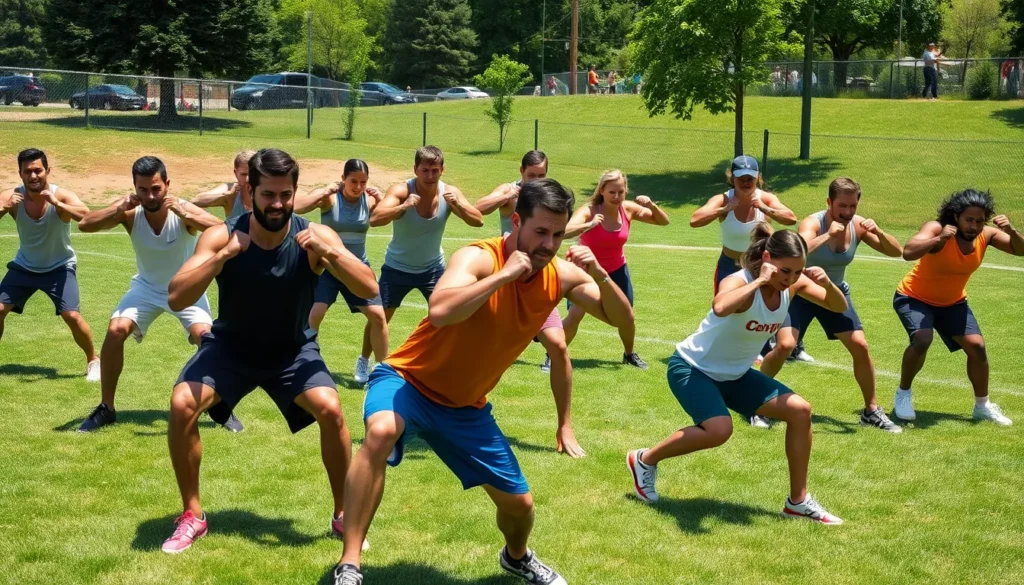
Muscle mechanics might sound like a topic reserved for gym rats and anatomy nerds, but it’s way more exciting than it seems. Imagine your muscles as finely tuned machines, working tirelessly behind the scenes while you go about your day. Whether you’re lifting weights or just trying to reach that last slice of pizza, understanding how these powerhouses operate can unlock a whole new level of performance.
Muscle Mechanics
Muscle mechanics deals with how muscles function to produce movement in the body. Understanding these principles is crucial for enhancing performance and optimizing physical tasks.
Definition and Importance
Muscle mechanics refers to the study of the mechanisms by which muscles generate force and movement. Recognizing this concept impacts various fields, including sports science and rehabilitation. Knowledge of muscle function enhances performance in athletes and improves recovery strategies in rehabilitation settings. Muscles play a vital role in everyday tasks like walking, lifting, and even posture maintenance, confirming their importance in overall health.
Key Concepts
Muscle contractions occur in three primary forms: isotonic, isometric, and eccentric. Isotonic contractions involve muscle shortening while exerting force, contributing to movement. Isometric contractions occur when muscles generate tension without changing length, stabilizing joints. Eccentric contractions involve the lengthening of muscles while under tension, which is essential for controlling movement. Additionally, the muscle fiber types—slow-twitch and fast-twitch—determine performance characteristics, influencing endurance and strength. Understanding these key concepts provides a foundation for optimizing training and performance.
Types of Muscle Contraction

Muscle contractions play a critical role in movement and performance. Three main types—isometric, isotonic, and eccentric—explain how muscles function effectively in various activities.
Isometric Contractions
Isometric contractions involve muscle tension without any change in muscle length. This type happens during static movements. For example, when pushing against an immovable object, the muscle engages but does not shorten or lengthen. Isometric exercises, such as planks, enhance stability and build strength in specific muscle groups. Strength gains occur as muscle fibers develop tension, making isometric contractions valuable in rehabilitation and strength training programs.
Isotonic Contractions
Isotonic contractions occur when muscles change length while generating force. Two subtypes exist: concentric and eccentric. Concentric contractions involve muscle shortening, as seen during a bicep curl when lifting a weight. Eccentric contractions occur during muscle lengthening, like lowering the weight after a curl. Isotonic exercises, such as squats and push-ups, improve overall muscle strength and endurance. Both forms contribute to muscle development, fostering balanced training approaches.
Role of Muscle Fiber Types
Muscle fiber types play a crucial role in determining physical capabilities and performance. Understanding these variations aids in optimizing training and recovery strategies.
Slow-Twitch Fibers
Slow-twitch fibers, also known as type I fibers, excel in endurance activities. These fibers possess high oxidative capacity, allowing sustained muscle contractions over extended periods. Athletes engage slow-twitch fibers during activities like long-distance running and cycling. Fatigue resistance is a key characteristic, enabling individuals to maintain activity without exhaustion. Additionally, slow-twitch fibers require more oxygen, which supports aerobic metabolism. Individuals aiming for improved endurance should focus on training that activates these fibers through longer sessions of low to moderate intensity.
Fast-Twitch Fibers
Fast-twitch fibers, categorized as type II fibers, are essential for short bursts of strength and power. These fibers are further divided into type IIa and type IIb, with type IIa fibers possessing some endurance capabilities, while type IIb fibers focus on explosive movements. Fast-twitch fibers allow athletes to perform high-intensity activities like sprinting, weightlifting, and jumping. These fibers fatigue more quickly due to their reliance on anaerobic energy systems. Training geared towards fast-twitch fibers emphasizes explosiveness and strength through short, intense intervals and resistance exercises.
Factors Affecting Muscle Mechanics
Muscle mechanics involves several factors that influence how muscles generate force and movement. Understanding these elements enhances athletic performance and recovery strategies.
Muscle Length and Tension
Muscle length plays a crucial role in its ability to generate tension. Optimal muscle length maximizes force production through the overlap of actin and myosin filaments within the muscle fibers. A muscle at its resting length generates the highest tension. When a muscle stretches too far or contracts too much, its tension capacity diminishes. For example, overly elongated muscles reduce force output during athletic performance. Conversely, muscles held in a brief contracted position can also experience fatigue, impacting overall functionality. Proper training and stretching techniques can help maintain ideal muscle length, thereby optimizing performance.
Velocity of Contraction
The velocity of contraction directly affects the amount of force a muscle generates during movement. Fast contractions produce less force due to the shorter time for cross-bridge cycling between actin and myosin filaments. Slow contraction speeds, however, allow for maximum force production as muscles engage fully. Various activities require different contraction speeds; sprinting demands quick, powerful contractions, while weightlifting may involve slower, controlled movements. Training strategies that incorporate varying velocities—such as plyometrics for fast-twitch fibers and hypertrophy training for slow-twitch fibers—enhance muscle performance across diverse activities.
Applications of Muscle Mechanics
Muscle mechanics plays a critical role in various practical fields, significantly impacting both athletic performance and rehabilitation strategies.
Athletic Performance
Understanding muscle mechanics directly enhances athletic performance. Training methodologies that incorporate knowledge about muscle contractions optimize movements. Athletes benefit from targeted workouts focusing on specific muscle fibers. For instance, integrating eccentric contractions into strength training improves overall power. Plyometric exercises capitalize on fast-twitch fibers, fostering explosive strength vital for sports. Similarly, isotonic exercises like squats promote both strength and endurance. Evaluating muscle length and tension aids in designing effective training regimens. Enhanced performance also stems from adapting to contraction velocities during workouts, ensuring athletes achieve their peak potential.
Rehabilitation
Muscle mechanics is a cornerstone of effective rehabilitation approaches. Therapists utilize knowledge of muscle contractions to design recovery protocols tailored to patients’ needs. Isometric exercises stabilize and strengthen injured muscle groups without risking strain. Gradually integrating isotonic contractions supports functional movement recovery. Observing muscle length during rehabilitation ensures optimal tension generation, promoting healing. Additionally, adjustments based on contraction velocity help prevent re-injury during recovery phases. Overall, understanding muscle function optimizes rehabilitation strategies, enabling patients to regain strength and mobility efficiently.
Conclusion
Understanding muscle mechanics is vital for anyone looking to improve physical performance or recover from injury. By grasping how muscles generate force and movement, individuals can tailor their training and rehabilitation strategies effectively. The nuances of muscle contractions and fiber types provide a framework for optimizing workouts and enhancing overall fitness.
Whether it’s through targeted strength training or strategic recovery protocols, knowledge of muscle mechanics empowers individuals to achieve their goals. This foundational insight not only supports athletic endeavors but also enriches daily activities, making it an essential aspect of health and wellness. Embracing these principles can lead to a more informed and effective approach to physical activity.








